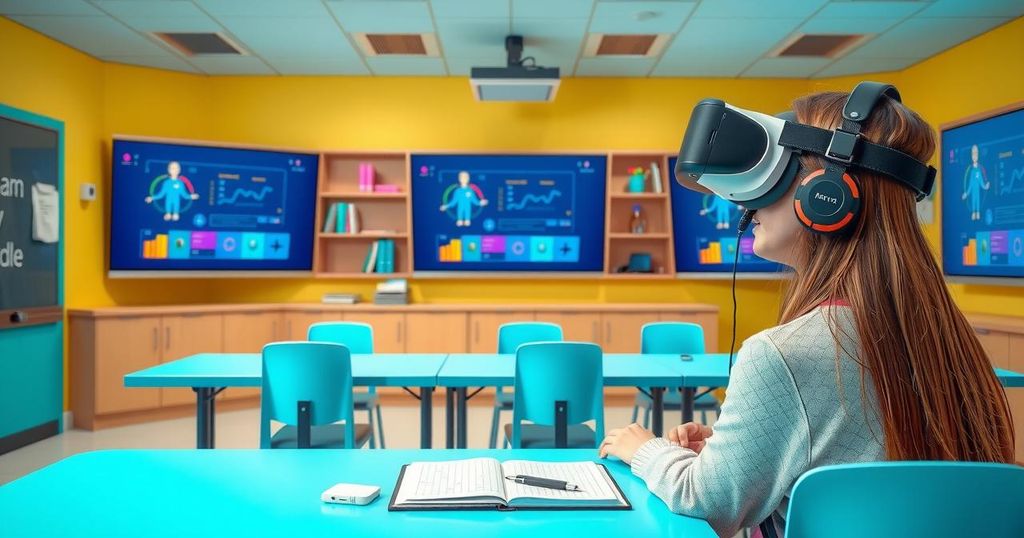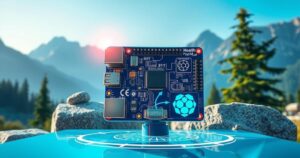AI in Education: Envisioning a Future Where Technology Enhances Learning
AI is reshaping education, raising concerns about skills like reading and writing. Many parents worry about cheating and efficiency. Sal Khan argues that AI can enhance learning and personalize education, suggesting a role for teachers as essential. He compellingly presents a vision where AI could enrich classrooms while human instructors remain integral.
There’s no doubt, AI is reshaping our world, and it can be pretty frightening. What’s real? What’s fake? The job market feels like a big question mark. But, my biggest worry? Our kids. I mean, could a full-on adoption of AI stifle their ability to read deeply, write well, and think critically? That’s what I’ve been hearing from other parents too. They’re worried, and they’re not alone. Headlines say some students are already using AI to cheat, while others are seeing teachers utilize it for efficiency. Some districts are diving headfirst into it without much solid data on the benefits — or lack thereof — for student learning.
So, with all these concerns floating around, I decided to speak with Sal Khan, the author of “Brave New Words” and founder of Khan Academy, the online educational powerhouse. I figured he might have some insights that could ease my worries about AI in classrooms. Sal is known for his optimistic view on how AI could enhance education, and listening to him was certainly enlightening.
Our conversation was engaging, and if you can, take a moment to watch or read some excerpts from it, which I’ve included below. One key takeaway? The fears surrounding AI’s role in education are valid and they resonate with many.
Katty Kay opened the dialogue asking about parental fears — you know, the dread of kids essentially outsourcing their brains to ChatGPT and similar AI. She pressed Sal to share his vision for classrooms a decade down the line. Sal emphasized that fears are genuine but highlighted the original purpose of reading and writing. For instance, English teachers want students to communicate clearly. With AI, we can tackle those fears and perhaps rise to a level of mastery that we hadn’t even considered before.
He painted a compelling scenario without discussing technology directly: imagine a school district getting a billion-dollar windfall, hiring the best graduate students to help in classrooms. These students would assist teachers by grading papers and brainstorming creative lesson plans, providing real-time feedback about student engagement. This dream, according to Sal, is pretty close to what AI can ultimately become — a supportive assistant in learning environments.
Then there was a pivot to a different angle: the question of teachers’ roles as AI takes on more tasks. Sal pointed out that, even as AI potentially replaces some repetitive functions, the human connection in education remains irreplaceable. Teachers play a pivotal role in nurturing essential life skills like conflict resolution, accountability, and communication – things AI just can’t replicate.
What about student enjoyment? Katty asked if, with all this innovation, we might finally provide an engaging learning experience that resonates with students. Sal responded with optimism, suggesting that AI could tailor educational experiences to what truly interests students, making learning more engaging. His tool, Khanmigo, even allows students to interact with AI versions of historical figures or literary characters, making learning more immersive.
Envisioning the future, Sal speculated that virtual reality in classrooms might soon be mainstream – imagine taking a field trip inside the human body or to ancient Rome. That would elevate the learning experience tremendously!
Then, came the insight on creativity. Katty wondered if AI could spark creativity rather than just rote learning. Sal agreed, suggesting it amplifies what’s already there. Those who seek to innovate and create will find value in AI, while those who look to cut corners probably won’t see the same benefits. He shared his own experience using AI during speech preparation, illustrating that even the highest performers still add their unique touch to the words crafted with assistance.
In essence, AI could level the playing field for education, enhancing rather than replacing the invaluable human aspect of learning. In a world where technology’s reach grows daily, keeping a balance between human interaction and AI assistance seems crucial for our kids’ educational journeys.
If you found this article insightful, why not subscribe to The Essential List newsletter for regular updates packed with interesting stories?
The future is here, and it’s a mix of hope and uncertainty. We’ll see how this all pans out as both students and teachers navigate these uncharted waters together.
In summary, while the rise of AI in schools introduces valid concerns, it also offers a glimpse into a potentially brighter educational future. Sal Khan presents an optimistic perspective, suggesting that with AI acting as a supportive resource, students might enjoy a more personalized and engaging learning experience. Teachers will still be essential, fostering vital life skills and maintaining those personal connections that can’t be replicated by technology. The key will be finding a balance that harnesses AI’s potential while preserving the human element in education.
Original Source: www.bbc.com




